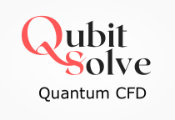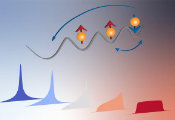Quantinuum Selected by DARPA to Advance to Stage B of Quantum Benchmarking Initiative
Broomfield, CO, November 06, 2025 -- Quantinuum, the world leader in quantum computing, has been selected by the Defense Advanced Research Projects Agency (DARPA) as a contractor to advance to Stage B of DARPA’s Quantum Benchmarking Initiative (QBI).
DARPA is using QBI to evaluate the technical likelihood that a utility scale quantum computer will be available no later than 2033. A multi-stage program, Stage B follows a six-month Stage A effort in which Quantinuum developed and delivered a detailed concept design for a utility scale system called “Lumos.”
Last year, Quantinuum released its public roadmap through the end of the decade with Apollo—a universal, fully fault-tolerant quantum computer—scheduled for launch in 2029. Lumos is a new addition to the roadmap as Quantinuum outlines plans to develop increasingly larger systems into the 2030s.
“This selection recognizes the strength and maturity of our roadmap and the work our teams have already delivered,” said Dr. Rajeeb Hazra, President and CEO of Quantinuum. “Lumos extends our roadmap into the next decade and gives DARPA a concrete, de-risked path for achieving utility-scale quantum computing by 2033. We look forward to partnering with DARPA and our ecosystem partners to advance this important national objective.”
Stage B will be a year-long, performance-based evaluation by DARPA’s Test and Evaluation team in which Quantinuum will develop a detailed R&D roadmap for Lumos to validate technical assumptions, verification methods, and scaling plans to meet the 2033 objective.
Yesterday, Quantinuum deployed its latest generation system, “Helios,” on schedule with its roadmap. With the highest fidelity physical qubits and logical qubits of any commercial system, and a next-generation software stack featuring a modern, high-level programming language, Helios is designed to accelerate quantum computing adoption. The system has already been used to simulate high-temperature superconductivity and magnetism at unprecedented scales—two applications with relevance to critical, industrial utility.




































